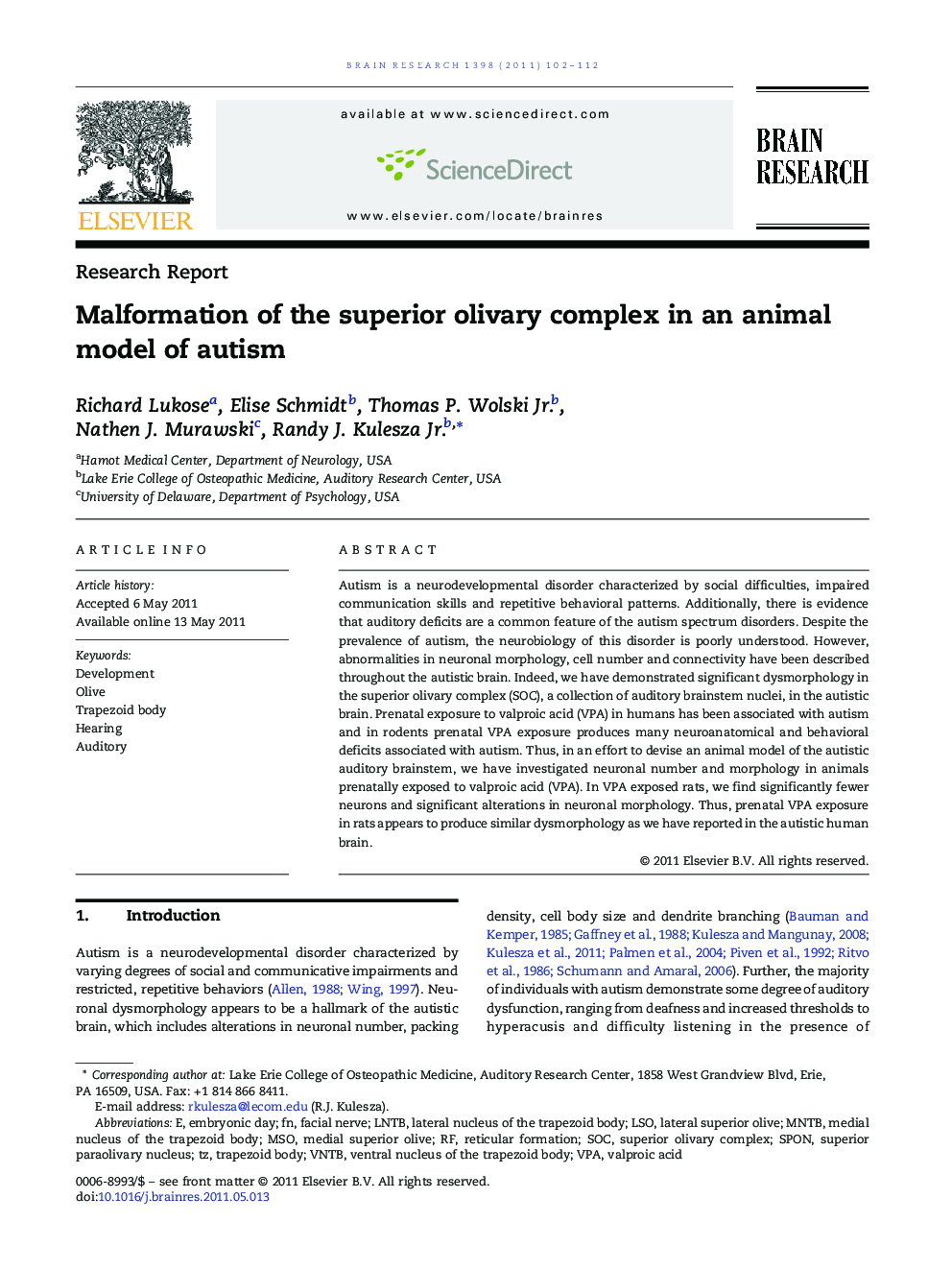| Article ID | Journal | Published Year | Pages | File Type |
|---|---|---|---|---|
| 4325862 | Brain Research | 2011 | 11 Pages |
Autism is a neurodevelopmental disorder characterized by social difficulties, impaired communication skills and repetitive behavioral patterns. Additionally, there is evidence that auditory deficits are a common feature of the autism spectrum disorders. Despite the prevalence of autism, the neurobiology of this disorder is poorly understood. However, abnormalities in neuronal morphology, cell number and connectivity have been described throughout the autistic brain. Indeed, we have demonstrated significant dysmorphology in the superior olivary complex (SOC), a collection of auditory brainstem nuclei, in the autistic brain. Prenatal exposure to valproic acid (VPA) in humans has been associated with autism and in rodents prenatal VPA exposure produces many neuroanatomical and behavioral deficits associated with autism. Thus, in an effort to devise an animal model of the autistic auditory brainstem, we have investigated neuronal number and morphology in animals prenatally exposed to valproic acid (VPA). In VPA exposed rats, we find significantly fewer neurons and significant alterations in neuronal morphology. Thus, prenatal VPA exposure in rats appears to produce similar dysmorphology as we have reported in the autistic human brain.
► The superior olive complex (SOC) is located in the brainstem and functions in hearing. ► Auditory dysfunction is a common feature of autism. ► In autism, the superior olive has fewer neurons and abnormal neuronal morphology. ► Prenatal exposure to valproic acid (VPA) is an animal model of autism. ► In animals prenatally exposed to VPA there are fewer SOC neurons which have abnormal morphology.
